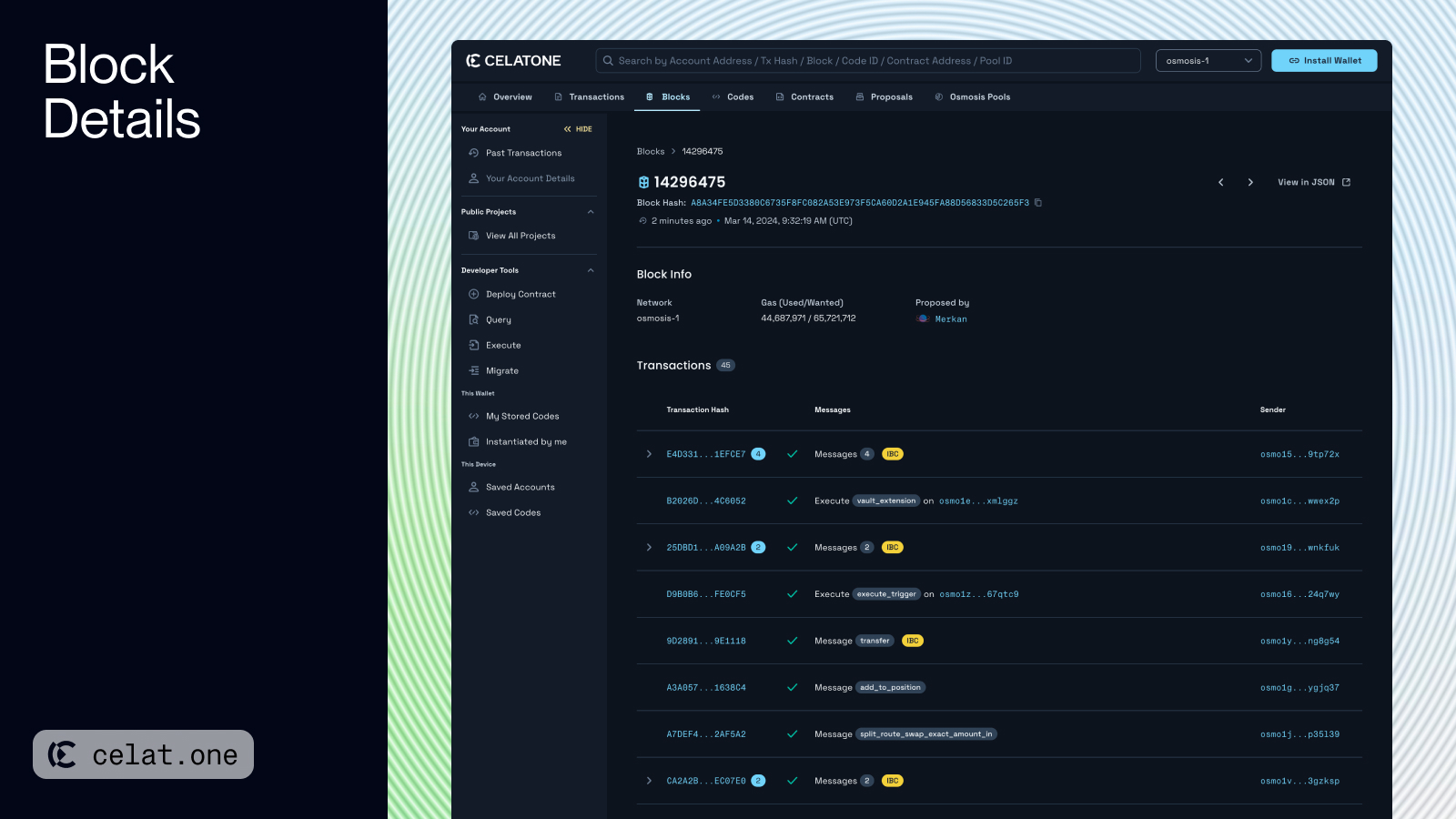Skip to main contentOverview
In the Cosmos ecosystem, a block is a set of transactions that have been confirmed and added to the blockchain.
Each block contains a header with metadata about the block, such as the block height (its sequential number in the blockchain), the time it was mined, and a hash of the previous block’s header, ensuring the integrity of the blockchain’s history.
Blocks are produced at regular intervals by validators who take turns proposing new blocks in a process defined by the blockchain’s consensus algorithm, such as Tendermint. This process ensures the network’s security and decentralized agreement on the state of the blockchain.
The Block Details page on Celatone provides information about a specific block in the blockchain:
- Block Number: Displays the unique identifier or height of the block in the blockchain sequence.
- Block Hash: Shows the unique hash value of the block for verification purposes.
- Timestamp: Indicates the exact time the block was added to the blockchain.
- Block Info: Includes the network name, the gas used versus the gas limit for the block, and the proposer of the block.
- Transactions: Lists all transactions included in the block, along with their hashes, the type of messages they contain, senders, and a feature to log in to comment on each transaction.
For detailed transactions and operations contained within the block, users can view the information in JSON format.
Block Details in MiniEVM
This section appears only on MiniEVM networks. It indicates that the transaction involves EVM-related messages, resulting in the creation of an EVM transaction
In MiniEVM networks, there’s an additional tab in the Transactions section to view both Cosmos and EVM transactions within a block. It’s important to note that the number of Cosmos transactions is typically equal to or higher than the number of EVM transactions. This is because every EVM transaction is generated from a Cosmos transaction, while a Cosmos transaction with multiple EVM-related messages will not generate any EVM transaction.
See more in EVM Transaction Details 

